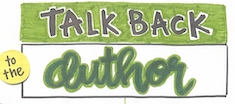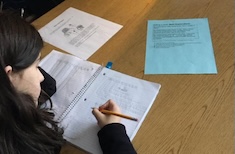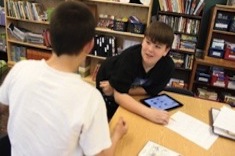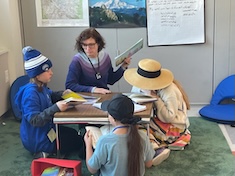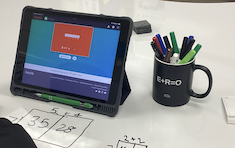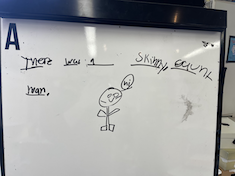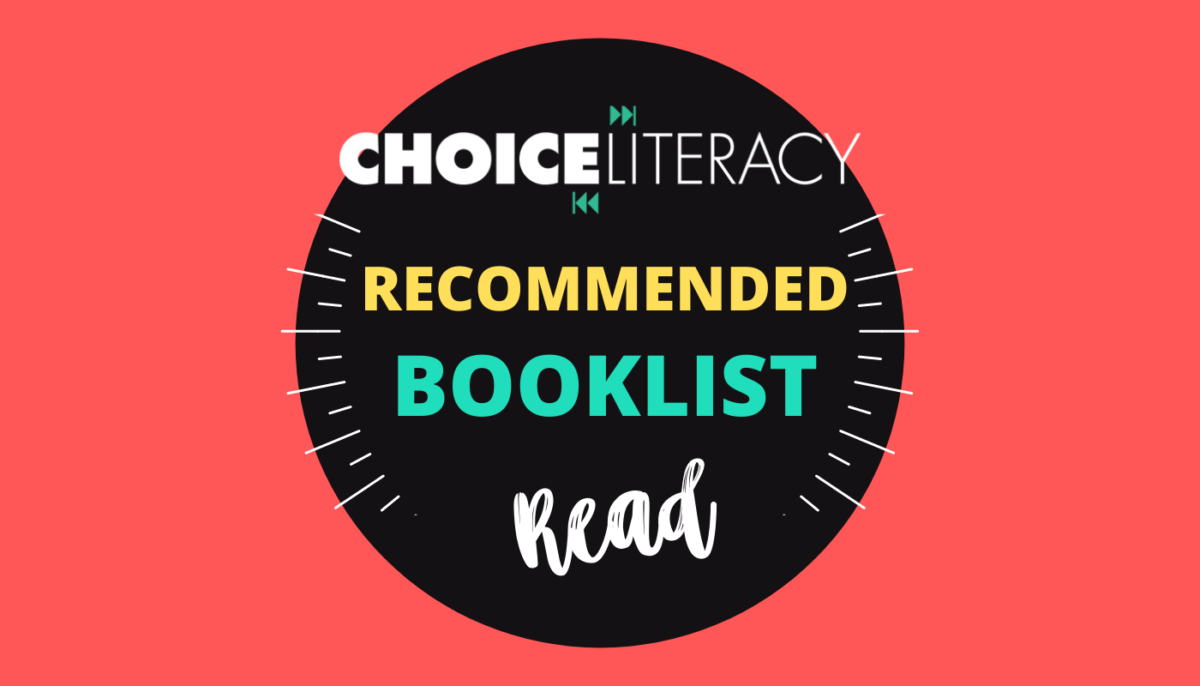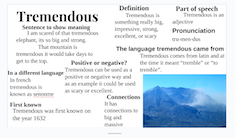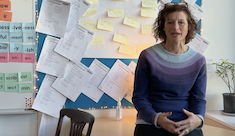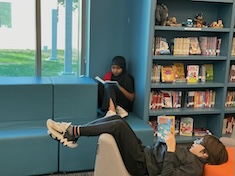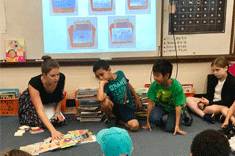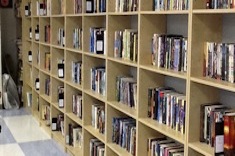6th
Latest Content
Background Knowledge: More than Just Facts
Although background knowledge may feel like an “old concept,” Leigh Anne Eck offers fresh and important considerations to lift students’ ability to comprehend complex texts.
Talking Back: A Strategy for Annotation
Tiffany Abbott Fuller gives us everything we need to use an active reading strategy. By the time you finish reading this article, you’ll be prepared to teach this strategy, equipped with sentence stems for students, specific ideas for instruction, and an anchor chart for visual reference.
Creating a Space
Gwen Blumberg clearly outlines different kinds of spaces for our classrooms and libraries. She was inspired by David Thornburg’s Learning Space model where he suggests creating campfires, watering holes, and caves to support different kinds of learning.
Setting Personal Goals for Math Independent Work
Mallory Messenger delivers a step-by-step guide to setting personal goals in math. Inspired by the practice of setting independent reading goals, Mallory explored the benefits of personal math goals. Download the Student Math Goals Self-Assessment and Reflection.
Developing Flexibility with Number Lines
Jodie Bailey offers clear and concise ways to use number lines as a tool to solve many different kinds of problems.
Can AI Help with Assessment?
Tara Barnett and Kate Mills explore using AI to help with grading student writing. In this practical and insightful article, they share a process for using AI as a co-teacher and their reflection on whether it helped them save time (nope) and made their feedback more useful (yep). They share a downloadable student literary essay reflection sheet that you might want to use in your classroom, too.
Helping Kids Lead Every Day: Differentiate with Precision
Tammy Mulligan shares three ways to precisely differentiate small-group instruction. This is the third installment of a three-part series.
Vertical Conversations to Create Coherence
Jodie Bailey shows how representations and models help students understand complex math concepts. By participating in vertical conversations, teachers can strengthen our own understandings of skill progressions and help students develop essential connections and deeper understandings.
Building Thinking Classrooms in Literacy
Inspired by Peter Liljedahl’s Building Thinking Classrooms in Mathematics, David Pittman applies instructional practices to get students thinking for themselves as readers and writers, and to be drivers, not consumers or mimickers of someone else’s way of doing things.
Booklist: Books that Cultivate Kindness
It’s easy for students to forget to show kindness, especially in the gray days of winter. Joanne Emery shares a powerful picture book called Two Sandals, Four Feet by Karen Lynn Williams and Khadra Mohammed and illustrated by Doug Chayka. She includes a list of additional titles to inspire kindness in your classroom all year long. If you love discovering new books, you’ll appreciate this list!
Harnessing the Power of Words
Tara Barnett and Kate Mills share three quick ways to increase vocabulary exposure in middle school. They also offer a summary of the importance of vocabulary development that inspires the urgency of vocabulary instruction.
Writing to Learn
Leigh Anne Eck shares how her middle school moved away from essay writing in all content areas and prioritized three writing strategies: sentences, summaries, and quick-writes as low-stakes writing tasks.
Quick Take: Everyone Owns the Learning
Tammy Mulligan wants the kids to own the learning in the classroom. Here is one way she helps reinforce the message that everyone has something to offer the learning community.
Feedback Writers Will Use
Vivian Chen offers insights into the conditions needed to help writers value feedback. She discusses written and verbal feedback, as well as AI-generated feedback.
Writing About Reading: A Search for Authenticity
In this powerful essay, Leigh Anne Eck challenged herself to read a complex text and discover the authenticity of writing about reading. She transferred her experience to create meaningful opportunities for her students as they write about their own independent reading.
Quick and Easy Reading Responses
Tara Barnett and Kate Mills offer three ways for students to write a quick and meaningful response inspired by their independent reading.
Alternatives to a Literary Essay: Two-Voice Perspective Poems
Tara Barnett and Kate Mills offer an alternative to writing a literary essay for middle school students. Providing alternative ways to discuss and demonstrate understanding about reading can be a welcome break from an essay for both students and educators, with valuable learning still taking place.
Delving Deeper Through Inquiry-Based Learning
Jodie Bailey suggests using books, pictures, or examples to begin or increase inquiry-based learning in your classroom. Using an example of learning more about pi from her classroom, Jodie offers ways to help students deepen their learning in any content area.
Girls’ Sports Books
Leigh Anne Eck noticed a gap in her library when it came to books with athletic female protagonists. After discovering many titles to add to her own library, Leigh Anne compiled this booklist so we can all fill this gap in our classroom libraries.
Leading with Empathy in the Classroom
Melissa Quimby offers profound advice for what to do when we notice inattention, excessive questioning, frozen learners, or disruptive behaviors. She recommends letting empathy lead our next steps.
How to Promote Civil Discourse in Your Classroom
Matt Renwick shows how to build the capacity of all students to engage in civil discourse.
Navigating the Election Season Booklist
Mandy Robek shares a booklist inspired to give students background about U.S. presidential elections.
Patterns of Prompting
We spend our days prompting whole groups, small groups, and individual learners. We’ve all been in situations where we may not have known what to say. Melissa Quimby offers advice on how to be educators who use language brimming with curiosity and encouragement.
I Don’t Hate Graphic Organizers
Vivian Chen challenges us to replace an overly prescriptive handout that dictates the contents of a paragraph or essay with more open-ended organizers and exemplars to help students plan and write with more independence.
Bit by Bit: Lifting the Level of Storytelling
Melissa Quimby shifts the way she helps students approach narrative writing by focusing on the conflict and encouraging students to unfold it bit by bit. This small shift lifts the level of the stories students write—you can try it, too!
Morning Hike
Gwen Blumberg helps us consider and create space for a variety of personalities and learning needs. Inspired by a morning hike, she takes her observations and applies them to give space for all students to learn.
A Poetic Beginning
Tara Barnett and Kate Mills use poetry to help students discover writing ideas. Inspired by three poems, students share their notebook entries and poems from the first days of a new school year.
Let’s Begin
Gwen Blumberg reflects on the community developed at a writing retreat and encourages teachers to consider the community of learners they will intentionally nourish this school year.
Fluency Practice in Middle School
Leigh Anne Eck tackles fluency strategies with her middle school readers.
Responding to Appeals for Help
Dana Murphy outlines three options to respond to a student who is stuck when reading and looking to the teacher for the answer. By being mindful when students appeal for help, we can make intentional, on-the-spot decisions to empower students to become better readers.
Browse Content By
Type
Category
- Assessment Tools
- Big Fresh Archives
- Booklists
- Choice Numeracy
- Classroom Design
- Common Core
- Community Building
- Conferring
- Content Literacy
- Digital Literacy
- English Language Learners
- Equity
- Family Relations
- Free Samples
- Guiding Groups
- Leadership
- Literacy Coaches
- Mentor Texts
- Minilessons
- New Teacher Mentors
- Podcasts
- Poetry
- Quote Collections
- Reading Strategies
- Self Care
- Struggling and Striving Learners
- Talking and Listening
- Teacher Study Groups
- Teaching Reading
- Teaching Writing
- Word Study and Vocabulary
Author
- Melissa Quimby
- Nawal Qarooni
- Gwen Blumberg
- Julie Cox
- The Lead Learners
- Hannah Tills
- Josie Stewart
- Ruth Metcalfe
- Mallory Messenger
- Becca Burk
- Jodie Bailey
- Vivian Chen
- Mary Brower
- Tiffany Abbott Fuller
- Stephanie Affinito
- Ruth Ayres
- Leigh Anne Eck
- Heather Fisher
- Shari Frost
- Julie Johnson
- Suzy Kaback
- Gigi McAllister
- Shirl McPhillips
- Melanie Meehan
- Cathy Mere
- Debbie Miller
- Tara Barnett and Kate Mills
- Tammy Mulligan
- Dana Murphy
- Bitsy Parks
- David Pittman
- Brenda Power
- Heather Rader
- Matt Renwick
- Mandy Robek
- Christy Rush-Levine
- Gretchen Schroeder
- Jen Schwanke
- Brian Sepe
- Katherine Sokolowski
- Stella Villalba
- Jennifer Vincent
Grade Level
Choice Literacy Membership
Articles
Get full access to all Choice Literacy article content
Videos
Get full access to all Choice Literacy video content
Courses
Access Choice Literacy course curriculum and training


